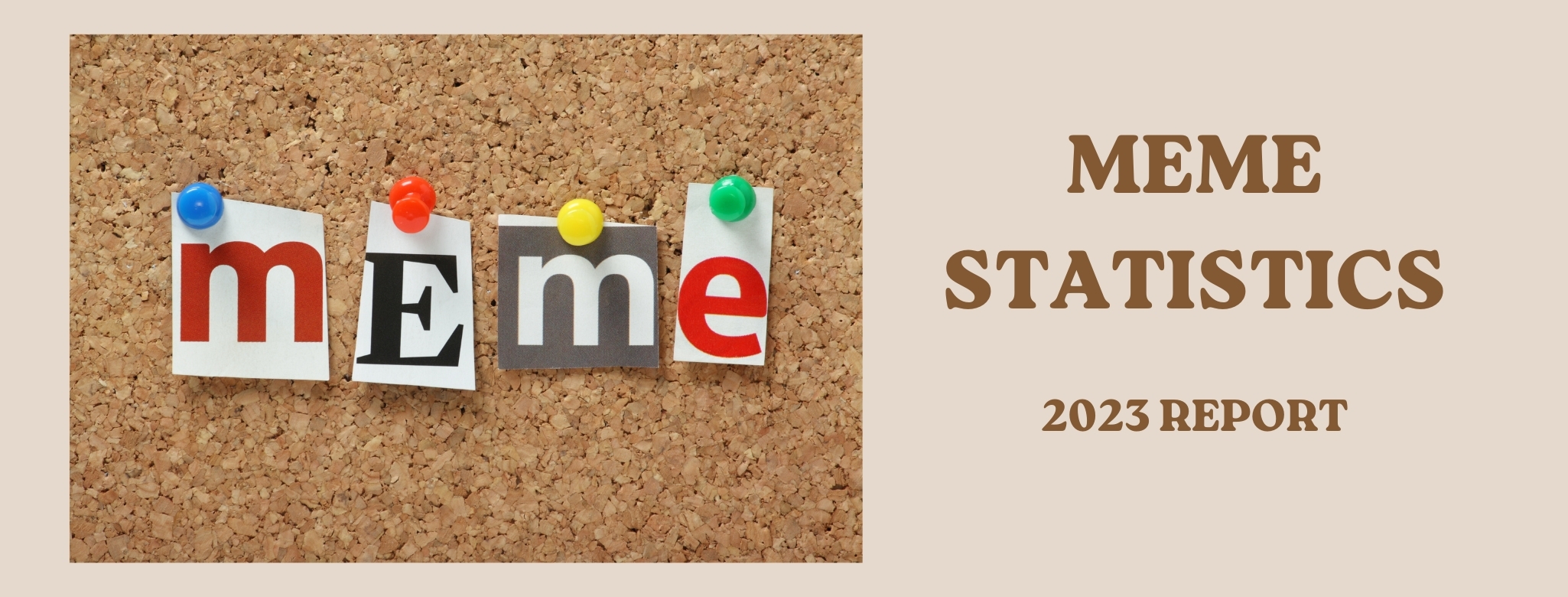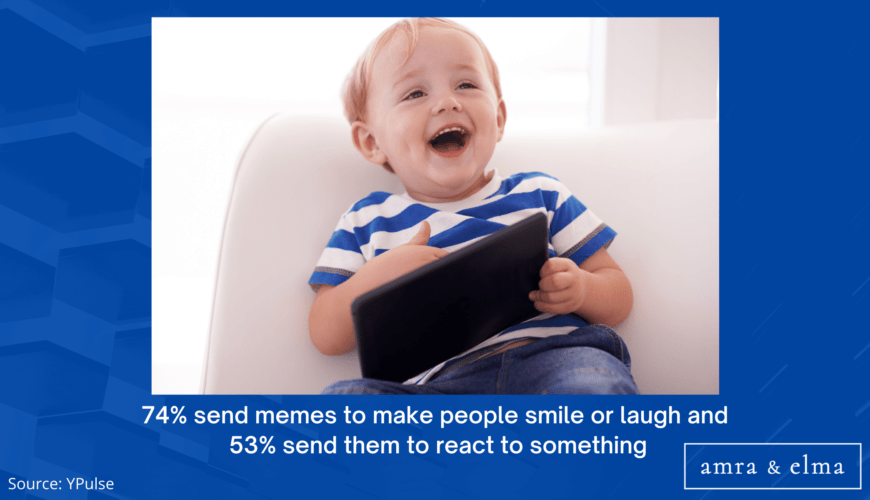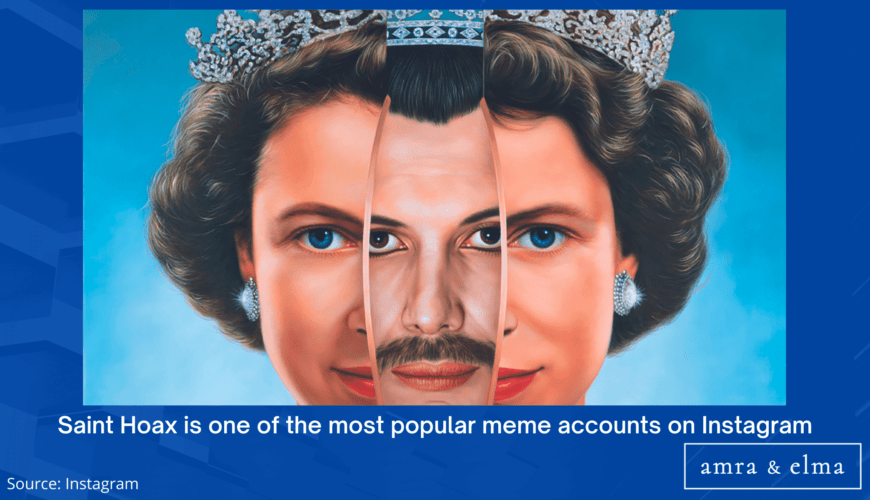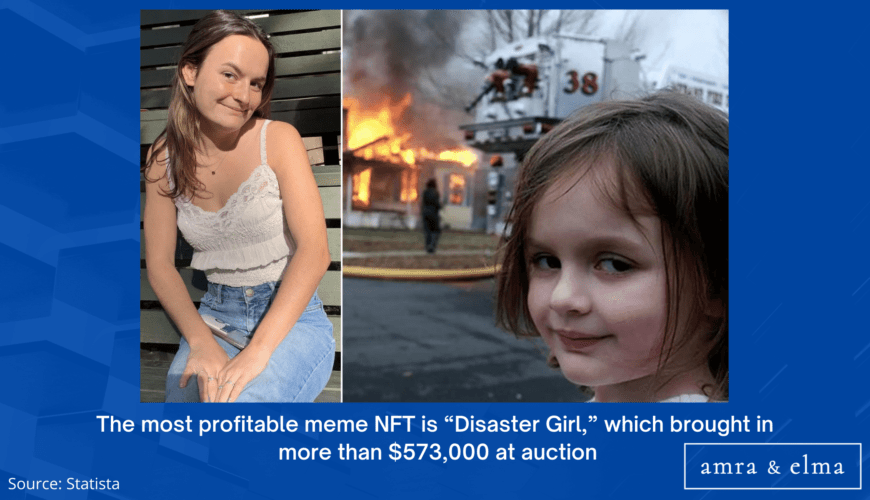
07 Jun TOP MEME STATISTICS IN 2023
With the rise of social media, memes have become one of the most popular forms of online communication. In 2020, the global meme industry was valued at $2.3 billion and was expected to grow to $6.1 billion by 2025, representing a compound annual growth rate of 21.6%. According to one study, memes are particularly popular with younger people: 75% of people 13 to 36 years old share memes. And research shows that memes can be an effective marketing tool, with over 60% of people saying they would be more likely to buy from a company that uses memes in their marketing. When it comes to reaching and engagement, memes have about ten times more organic reach than regular marketing graphics, with an engagement rate of 60%. In other words, memes are a powerful communications tool with the potential to generate significant ROI for businesses.
Below, we highlight 15 key meme statistics:
Meme Statistics (Editors Choice)
- Over 60% of people say they would be more likely to buy from a company that uses memes in their marketing
- The click-through-rate (CTR) of a meme campaign is 14% higher than email marketing
- CTRs in an average marketing campaign are approx. 6%, whereas in meme marketing is roughly 19%
- Memes have about ten times more reach with 60% percent organic engagement than regular marketing graphics
- The average millennial looks at 20-30 memes every day
- In 2020, the global meme industry was valued at $2.3 billion and is projected to grow to $6.1 billion by 2025
Meme Statistics: 15 Top Meme Statistics in 2023!
Meme Statistics #1: Memes have about ten times more reach with 60% organic engagement than regular marketing graphics.
According to a study conducted by NYU, memes have about ten times more reach with 60% percent organic engagement compared to regular marketing graphics. Memes are often more shareable since they are funny or relatable and therefore have the potential to go viral. Additionally, they are often cheaper to produce than traditional marketing materials. For companies looking to reach a broader audience on a tight budget, memes may be an effective way to do so. However, it is essential to note that not all memes will be successful. To create a meme that resonates with users, it is necessary to understand the target audience and what kind of sense of humor they respond to. When done correctly, memes can be a powerful marketing tool.

Meme Statistics #2: The click-through-rate (CTR) of a meme campaign is 14% higher than email marketing.
Email marketing is a popular way to reach potential customers, but a new study suggests that memes may be even more effective. According to Forbes, the click-through-rate (CTR) of a meme campaign is 14% higher than email marketing. The study compared the two methods in terms of their ability to generate clicks and conversions. While email marketing had a higher conversion rate, the overall number of clicks was significantly higher for memes. The study suggests that memes are more likely to go viral, which can lead to a larger number of potential customers being reached. While email marketing is still an important tool, the findings of this study suggest that memes should not be ignored as a potential marketing tool.
Meme Statistics #3: CTRs in an average marketing campaign are approx. 6%, whereas in meme marketing is roughly 19%.
The average click-through rate (CTR) for a marketing campaign is approximately 6%. However, UNI ScholarWorks’s report states that CTR for a meme marketing campaign is roughly 19%. Meme marketing is a form of internet marketing that uses social media to create and share memes to promote a product, service, or brand. Unlike traditional marketing campaigns, which rely on expensive advertising channels such as television or print, meme marketing relies on viral sharing to spread the message. As a result, meme marketing can be an extremely cost-effective way to reach a large audience. Additionally, due to the virality of memes, the reach of a meme marketing campaign can often exceed that of a traditional marketing campaign. Meme marketing has become an increasingly popular choice for businesses and organizations looking to connect with online audiences.

Meme Statistics #4: Over 60% of people say they would be more likely to buy from a company that uses memes in their marketing.
According to a recent survey by Forbes, over 60% of people say they would be more likely to buy from a company that uses memes in their marketing. This is likely because memes are highly shareable and go viral, resulting in free advertising for the company. Additionally, memes are often seen as relatable, making them an effective way to connect with potential customers. Furthermore, using memes in marketing can help a company to appear modern and up-to-date, which is essential in today’s ever-changing digital landscape. Using memes as part of a marketing campaign is a great way to reach a wider audience and boost brand awareness.
According to YPulse’s latest social media behavior survey, 75% of people 13 to 36 years old share memes. 55% of 13-35-year-olds send memes every week—and 30% send them every day. The same survey found that nearly half of all respondents said they had seen a meme that had made them laugh in the past week, and one in four said they had shared a meme with a friend in the past week. Memes have become such a ubiquitous part of internet culture that they have even spawned their subgenre of comedy, known as “meme comedy.” As the popularity of memes shows no signs of waning, it is clear that they are here to stay.
According to YPulse’s latest social media behavior survey, memes are now considered an essential part of young people’s lives. The majority of respondents said that memes make them laugh (64%) and enjoy seeing memes relevant to their interests (61%). Social media is the most popular place to share them, with 29% saying they share memes on social, 15% saying they share on chat apps, and 31% saying they share memes in both places. Memes are also becoming increasingly political, with 37% of respondents saying they had seen a meme about politics in the past month. As memes become more mainstream, it’s clear that they are here to stay.
Meme Statistics #7: 74% send memes to make people smile or laugh—and 53% send them to react to something.
According to YPulse’s latest social media behavior survey, 74% of respondents said they send memes to make people smile or laugh. 53% said that they send them to react to something. 36% say they send memes to show how they’re feeling, 35% use them as code to someone who will “get it,” and 28% send them when words can’t express how they feel. Overall, most respondents said that they use memes as a way to communicate and connect with others. This is in line with other research on the topic, which has found that young people see memes as a form of vernacular digital communication. In a world where we are increasingly connected online, it’s no surprise that memes have become such a popular way to communicate with others.

A recent Forbes survey found that 38% of social media users follow meme accounts. This is hardly surprising, as memes are a highly shareable form of content that often goes viral. However, what is surprising is the high percentage of users who are willing to engage with advertising on these platforms. With over half of users saying they would be ready to view ads in exchange for access to free content, there is a clear opportunity for businesses to reach a large and engaged audience through meme accounts. However, companies must be careful not to overdo it, as users are quick to unfollow accounts that bombard them with too many ads. Instead, a more practical approach may be to partner with popular meme accounts and create sponsored content that is entertaining and relevant to their audience.
Meme Statistics #9: f**ckjerry is the most followed meme account on Instagram, with 16.8 million followers.
f**ckjerry is a popular meme account on Instagram with 16.8 million followers. The account posts screenshots of other social media posts that are often irreverent or silly. f**ckjerry has been accused of posting recycled (read: stolen) jokes and has actively encouraged people to unfollow them over this issue. Despite these concerns, the account has remained popular, with 16.8 million followers as of 2020. f**ckjerry‘s popularity highlights the demand for entertaining and easily accessible content. As social media usage continues to grow, f**ckjerry will likely be a popular destination for users looking for a good laugh.
Meme Statistics #10: Saint Hoax is one of the most popular meme accounts on Instagram.
One of the most popular meme accounts on Instagram is Saint Hoax. The account’s popularity partially stems from its willingness to partner with major brands and events. For example, in 2021, Saint Hoax served as a “meme correspondent” for the Met Gala, one of the year’s most significant fashion events. This partnership helped to increase exposure for both the account and the event. Furthermore, it highlights how brands are increasingly turning to memes to reach young audiences. In many ways, Saint Hoax is at the forefront of this trend. As the account continues to gain popularity, we will likely see more brands following suit in the future.

Meme Statistics #11: The average millennial looks at 20-30 memes every day.
According to a survey conducted by Forbes, the average millennial looks at 20-30 memes every day. That’s a lot of funny pictures! But why are memes so popular? One reason is that they are easy to consume. You can scroll through your feed and get a quick chuckle from a meme without committing to reading a long article or watching a detailed video. They’re also highly shareable, so you can quickly spread the laughter by sending a funny meme to your friends. And, of course, there’s the element of nostalgia – many popular memes feature characters or references from our childhood, which can take us back to simpler times. In a fast-paced and stressful world, it’s no wonder that memes have become such a popular way to relax and connect with others.
Meme Statistics #12: In 2020, the global meme industry was valued at $2.3 billion.
According to Statista, the global meme industry was valued at $2.3 billion in 2020. This figure is expected to grow to $6.1 billion by 2025, representing a compound annual growth rate of 21.6%. A large part of the meme industry’s growth can be attributed to the increasing popularity of social media platforms like Instagram and TikTok. These platforms provide a fertile ground for creating and disseminating memes with over two billion active users. In addition, the rise of mobile devices has made it easier than ever for people to access memes while on the go. As a result of these trends, the global meme industry is expected to continue increasing in the coming years.
Meme Statistics #13: The most profitable meme NFT to date is “Disaster Girl,” which brought in more than $573,000 at auction.
The picturesque image of “Disaster Girl” has brought in more than $573,000 at auction, making it the most profitable meme NFT. The photo shows a four-year-old Zoe Roth mischievously grinning in front of a burning house. Unknowingly, Zoe’s picture would soon become an iconic meme used in various settings, such as promoting safe driving habits and commenting on current events. In 2021, 21-year-old Zoe decided to cash in on her involuntary fame by selling the digital file as an NFT. Though the price may seem high, some say it’s a fair price for a piece of internet history. What’s more, proceeds from the sale will be donated to charity. So, while “Disaster Girl” may have started as an innocuous photo, it has since become a source of both laughter and goodwill.

Meme Statistics #14: Shiba Inu (SHIB)was the most popular meme crypto in 2021, with 43 million more views than Bitcoin (BTC).
In 2021, Shiba Inu (SHIB) was the most popular cryptocurrency, with 43 million more views than Bitcoin (BTC). On October 29, 2021, its market capitalization reached $41 billion, making it a significant competitor to Dogecoin (DOGE) and referred to by crypto enthusiasts as a “Dogecoin killer.” SHIB is a decentralized currency based on the Ethereum blockchain and named after the Shiba Inu dog breed. The token was created as a joke in December 2020 but quickly gained popularity due to its low supply and meme-based marketing. As of October 2021, over 10 million SHIB tokens are in circulation. While SHIB has been praised for its innovative approach to cryptocurrency, some have raised concerns about its centralized development team and lack of transparency. Only time will tell whether SHIB can maintain its place at the top of the crypto charts.
In 2021, Instagram revealed that its users share one million memes daily. This figure is up from 500,000 in 2018, suggesting that the popularity of memes is on the rise. There are several possible explanations for this trend. First, memes provide a quick and easy way to communicate a message or share opinions. They are also often funny or relatable, making them more enjoyable to consume than other forms of social media content. Additionally, the rise of mobile devices and platforms like TikTok has made it easier for people to create and share memes. According to McPaw, one of their most popular blog posts is “How to Clear the Storage on the iPhone”. According to the website, users are producing so much content that it may no longer fit on their phones. As a result, we can expect to see more memes in the years to come.
The Future of Meme Industry
This report has outlined some critical meme statistics for 2022. As we can see, memes have become big business. What started as an online niche market has exploded into the mainstream, with companies like Imgur and Giphy now valued in the billions. But what does the future hold for the meme industry?
Two key trends are likely to shape the future of memes. Firstly, we move away from traditional social media platforms like Facebook and Twitter towards newer, more visual-focused networks such as Snapchat and Instagram. This shift is being driven by younger users, who increasingly gravitate towards these platforms. Secondly, we are seeing a rise in so-called ‘ad memes’ – branded content designed to go viral. This is a relatively new phenomenon, but one that is likely to grow in popularity as companies look for ways to reach young audiences.
So what does all this mean for the future of memes? We can expect to see more visual content, more competition for attention, and more brands trying to get in on the action. In other words, the meme industry will only get more extensive and more competitive. So if you want to stay ahead of the curve, you need to start thinking about how you can make your memes stand out from the crowd.
TOP MEME STATISTICS IN 2023- FAQ:
A recent Forbes survey found that 38% of social media users follow meme accounts. This is hardly surprising, as memes are a highly shareable form of content that often goes viral. However, what is surprising is the high percentage of users who are willing to engage with advertising on these platforms. With over half of users saying they would be ready to view ads in exchange for access to free content, there is a clear opportunity for businesses to reach a large and engaged audience through meme accounts.
In 2021, Instagram revealed that its users share one million memes daily. This figure is up from 500,000 in 2018, suggesting that the popularity of memes is on the rise. There are several possible explanations for this trend. First, memes provide a quick and easy way to communicate a message or share opinions. They are also often funny or relatable, making them more enjoyable to consume than other forms of social media content.
When were memes created?
According to Britannica, the term meme was introduced in 1976 by British evolutionary biologist Richard Dawkins. He conceived of memes as the cultural parallel to biological genes and considered them as being in control of their own reproduction.
What is the global worth of the meme industry?
According to Statista, the global meme industry was valued at $2.3 billion in 2020. This figure is expected to grow to $6.1 billion by 2025, representing a compound annual growth rate of 21.6%. A large part of the meme industry’s growth can be attributed to the increasing popularity of social media platforms like Instagram and TikTok. These platforms provide a fertile ground for creating and disseminating memes with over two billion active users.
What is a meme and why is it so popular?
To understand what is a meme, we can describe it as an idea, behavior, or style that spreads from person to person within a culture. A meme functions as a unit of cultural meaning and can be transmitted through verbal or nonverbal communication. Memes are not just images but can also include videos, articles, and other forms of media. When discussing what is a meme, it’s also important to note that the most common form of a meme is an image with text overlayed, but it can also be in the form of a GIF, video, or article.
Memes are often used to communicate a message or idea humorously. They can be used to make social commentary on current events or to poke fun at popular culture. When discussing what is a meme, we can also mention that memes can be used to spread disinformation or propaganda.
Memes are created by individuals, but they can also be created by brands or corporations. Some memes become so popular that they go viral and are shared by millions of people online.
Memes have been around for a very long time, but if someone would love to know what is a meme, we also need to mention that they have become increasingly popular in recent years. There are many reasons why memes are so popular.
Some of the reasons include that memes are easily shareable and can be quickly spread across social media platforms. When understanding what is a meme, we can also say that memes are often humorous or satirical and can provide a quick laugh. Memes can additionally be used to express one’s feelings or opinions about a topic, and the reason why are they so popular could also be that memes can be used to communicate with others who share similar interests.
Memes are popular because they are an easy and fun way to communicate with others. They allow people to share their thoughts and feelings about topics that interest them, and they often provide a quick laugh. When discussing what is a meme, we can also say that memes can additionally be used to make political statements or to get a message across quickly and efficiently. Additionally, memes are easily shareable on social media, mostly on Facebook, Instagram, and TikTok, which means that they can quickly spread across social media platforms. This makes them an efficient way to communicate with large groups of people.
Overall, there are many reasons why memes are so popular and there are many ways to explain what is a meme, and these reasons continue to attract new users to this form of communication.
What are some of the most famous US memes?
When it comes to US memes, they have become a prominent part of popular culture. For those unfamiliar with the term, US memes are images or phrases that are shared widely on social media and other digital platforms and are US-based. US memes are humorous images, videos, or other media that are widely shared through social media platforms and the internet. Generally, US memes use a combination of popular culture references, current events, or jokes to convey their message.
As such, US memes often become viral sensations but become firstly US famous. While countless memes are circulating throughout the internet, some US memes are more popular than others and have become iconic representations of American culture.
One of the most famous US memes is the “distracted boyfriend” meme which features a man looking at another woman while his girlfriend looks disapprovingly at him. This part of US memes has been widely shared and has become an embodiment of modern relationship woes—from cheating to bad decisions—and can be referenced in any situation where someone may be distracted by something else.
The “Success Kid” is also one of the most famous US memes that depict a young boy fist pumping with a victorious expression as if he achieved something amazing. This part of US memes was originally used to suggest that anyone could find success with determination and hard work but it has since expanded to more broad uses such as suggesting that someone has accomplished something despite difficult odds or made a great decision without being too boastful.
Also one of the most famous US memes is the “Drake Hotline Bling” video featuring Canadian rapper Drake dancing in front of bright yellow backgrounds which spawned numerous imitations and parodies online. This part of US memes became popular across different countries due to its widespread use in various situations where people want to express joy or excitement about something.
Finally, one cannot talk about US memes without mentioning Grumpy Cat who exploded into popularity back in 2012 after her owner posted pictures on Reddit featuring her famously sour expression. Her stock rose further thanks to her adoring fans making hilarious photoshopped images out of her iconic grumpy face making her one of America’s most beloved cats (and perhaps even memes) ever created!
Other examples of US memes can range from jokes about current events and national holidays to parodies of classic American movies such as the Godfather or Rocky Horror Picture Show. Additionally, some US memes draw upon American slang words or phrases for comedic effect. As an example, there have been multiple US memes featuring the phrase YOLO (you only live once) in various contexts throughout the past few years.
In conclusion, US memes are funny images or short video clips that convey a humorous message based on popular culture references or current events in America. While US memes may not always be serious, they provide an entertaining way for people around the nation to connect.

